Your dreams of Hawaii are as soft as the islands’ sunsets. The soothing sounds of the ukulele drift on the humid breeze, hula girls sway in the distance and you can still smell that fragrant lei around your neck.
Hawaii’s locals all live on “island time.” Almost by law, nobody is in a rush on the islands. And it’s difficult to find a friendlier culture on planet earth. By law, the people of Hawaii live Aloha. It’s a spiritual code of conduct that simply states that no Hawaiian can be comfortable if one islander suffers. They are always there to lend a helping hand.
The world’s most isolated chain of islands sits right in the middle of the Pacific Ocean. The word Pacific translates to “friendly,” so the islands are enveloped in the friendly, tropical waters of the Pacific. Everything about Hawaii is warm and inviting.
Unfortunately, looks can be deceiving. Hawaii’s jaw-dropping scenery can be thorny and the Pacific Ocean can turn unfriendly. But, if you’re aware of the state’s health concerns, you can easily have a healthy, safe and unforgettable Hawaiian vacation.
Vog -- Volcanic Fog
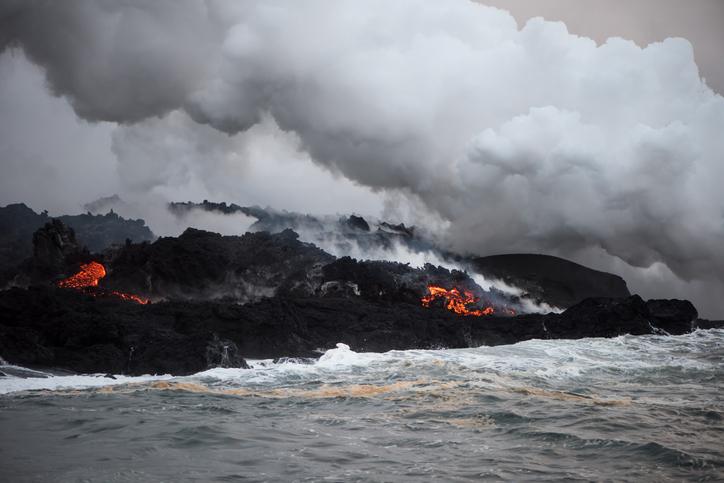 Hawaii has six still-active volcanoes. You’ll find one on Maui. Haleakala National Park is actually the crater of an active volcano, but it hasn’t erupted for centuries. But it’s a different story altogether over on the Big Island where you’ll find the other five active Hawaiian volcanoes.
Hawaii has six still-active volcanoes. You’ll find one on Maui. Haleakala National Park is actually the crater of an active volcano, but it hasn’t erupted for centuries. But it’s a different story altogether over on the Big Island where you’ll find the other five active Hawaiian volcanoes.
The islands two massive mountains -- Mauna Kea and Mauna Loa -- are still active. They erupt about every six years. You won’t be able to see two others. One is near death and the other is underwater. But its Kilauea that gets all the attention. Lava flows nearly year-round from this hyper-active volcano.
Mauna Kea, Mauna Loa, and Kilauea can erupt at any moment to send volcanic ash into the sky. Some of the ash is so light that it stays in the air for weeks to become volcanic fog or vog. And vog can cause some serious health issues.
The elderly, infants, asthmatics and those with cardiovascular disease should avoid vog altogether. Vog can irritate the nose, eyes, throat, and chest. It can even cause respiratory conditions and heart attacks.
Vog floats on the wind. This means that vog can affect each and every Hawaiian island. It also means that you can avoid the bulk of the vog by traveling to locations that are upwind from the eruption.
Vog gives the air a reddish hue that can actually make the sun look haunting and beautiful. It can also ground flights. An eruption in Iceland grounded European planes for two weeks back in 2010. Kilauea’s major eruption in May of 2018 put airlines on red alert, but it wasn’t powerful enough to ground flights completely. So, if you have health conditions that can be affected by vog and you’re worried about getting off the islands, a vacation to the Big Island should be avoided.
Mosquitoes
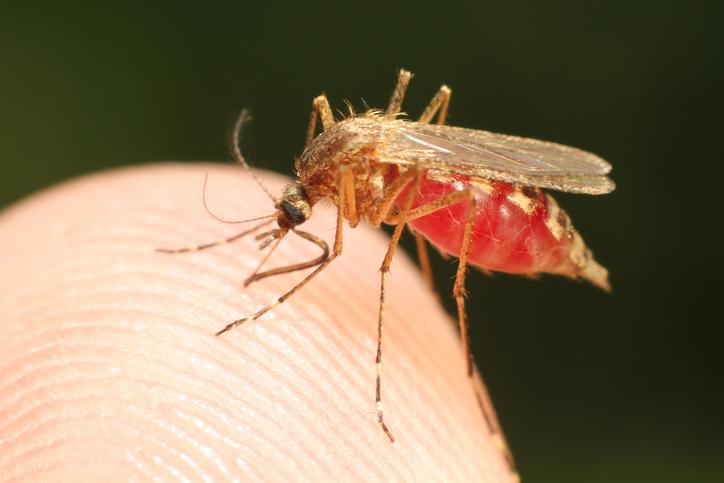 Hawaii doesn’t have a mosquito problem, per se, but mosquitoes are capable of carrying disease no matter where they are found on planet earth. And mosquitoes live wherever there are warm temperatures, plenty of water and humidity. That means you’ll be confronted with these blood-sucking insects during your Hawaiian vacation.
Hawaii doesn’t have a mosquito problem, per se, but mosquitoes are capable of carrying disease no matter where they are found on planet earth. And mosquitoes live wherever there are warm temperatures, plenty of water and humidity. That means you’ll be confronted with these blood-sucking insects during your Hawaiian vacation.
You should take precautions against mosquitoes in Hawaii. The bugs hate direct sunlight, so you’re more likely to find them at sunrise, dusk, nighttime and in shady areas. Pack some USDA-approved bug spray that carries at least 20% to 30% DEET.
The Sun
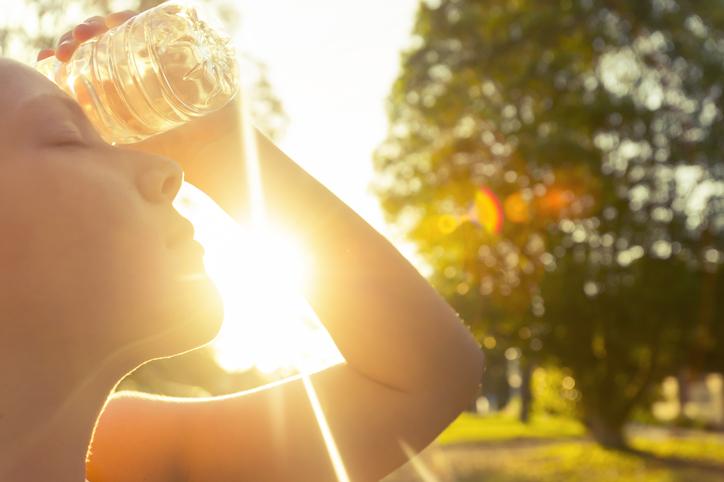 Pull out your handy globe. Put your finger on Hawaii. Spin the globe to put your finger on Los Angeles. Compare the two spots to get a feel for just how much farther south Hawaii sits on planet earth. Hawaii’s getting real close to the equator.
Pull out your handy globe. Put your finger on Hawaii. Spin the globe to put your finger on Los Angeles. Compare the two spots to get a feel for just how much farther south Hawaii sits on planet earth. Hawaii’s getting real close to the equator.
That means you’re closer to the sun. Well, that’s not scientifically accurate, but tell your skin that after a day of lounging on the beach. It sure feels like you’re closer to the sun in Hawaii.
We can’t state this enough -- protect yourself from Hawaii’s intense sunlight. Try to avoid the sun at its peak between 11:00 a.m. and 1:00 p.m. If you’re on the beach during that time, think about heading to a shady area for lunch before returning. And, if you’re hiking, plan a hike through a rainforest with plenty of shade or wear a wide-brimmed hat to keep the sun off.
Apply your sunscreen in the shade 15 minutes before being exposed to the sun. Re-apply the sunscreen every two hours. And always use sunscreen that is 30 SPF or stronger.
Hawaii’s government has passed a law banning certain types of sunscreen. The chemicals oxybenzone and octinoxate, found in most commercial sunscreens, eat away at the islands’ precious coral reefs. Any sunscreen containing these two chemicals are banned from the state entirely, but the ban won’t go into effect until 2021. So, you can show a little Aloha by avoiding these chemicals in your sunscreen during your Hawaiian vacation long before you have to.
The Vietnamese Centipede
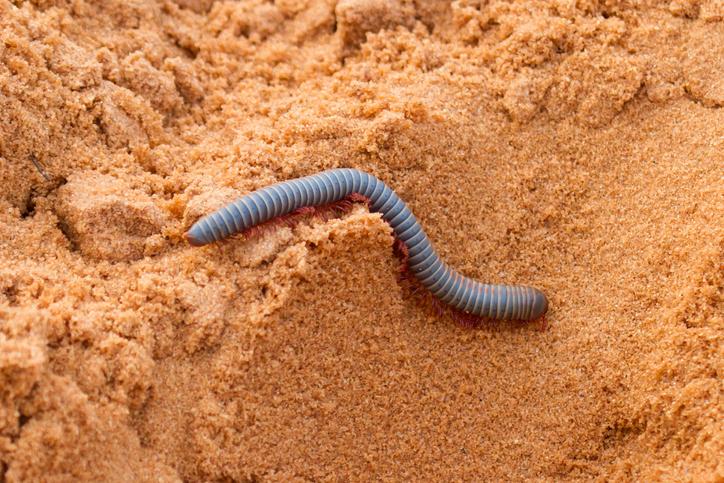 Hawaii is the world’s most isolated chain of islands. This isolation allows Hawaiian authorities to ban certain imports in order to keep the islands safe and clean. America’s 50th state enforces incredibly strict cat and dog importation laws to keep Hawaii free of rabies. It’s been incredibly effective.
Hawaii is the world’s most isolated chain of islands. This isolation allows Hawaiian authorities to ban certain imports in order to keep the islands safe and clean. America’s 50th state enforces incredibly strict cat and dog importation laws to keep Hawaii free of rabies. It’s been incredibly effective.
You also won’t find any snakes on the islands. In fact, you won’t find any dangerous land critters on the Hawaiian islands save for one -- the giant centipede.
There are 22 different species of centipede living on the Hawaiian islands as well as a plethora of millipedes, but it’s the giant venomous centipede that is infamous. It goes by plenty of different names -- giant centipede, Vietnamese centipede, jungle centipede, etc. -- but it’s the sheer size of the creepy crawler that sets it apart. Also, its bite.
This massive insect is brownish red with a serious pincher on its head. They move quick, don’t like to be disturbed and they’ll scurry away at the slightest disturbance. But this doesn’t stop hundreds of people from being bitten every year.
The bite and venom of this creature are notoriously painful. Those who have been bitten find it difficult to get relief, even with medication. In fact, locals say the only thing to do is get drunk for a few days to dull the pain.
These bugs can hide anywhere and everywhere. Shake out your shoes in the morning, check your bed and pillowcases before you fall asleep at night and even check the shower drain. And, to be on the safe side, avoid any type of centipede or millipede during your Hawaiian vacation.
Coral Reefs
 Thousands of tropical fish call the coral reefs of Hawaii home. These colorful creatures are waiting for you in the warm waters of the Pacific, but you should treat their home with respect.
Thousands of tropical fish call the coral reefs of Hawaii home. These colorful creatures are waiting for you in the warm waters of the Pacific, but you should treat their home with respect.
The oils in your skin will degrade coral reefs, so avoid touching the coral at all costs. But the coral can also fight back. If you happen to brush up against the coral, you may receive a “coral cut.”
Coral cuts are no different than regular cuts, but these are wider and slower to heal. A coral cut will leave a large patch of skin raw, rough and open to infection. Coral cuts are also very painful when they come in contact with salt water or sand. Of course, this makes a nice day at the beach a little more difficult, but the infection is what should have you worried.
Infections
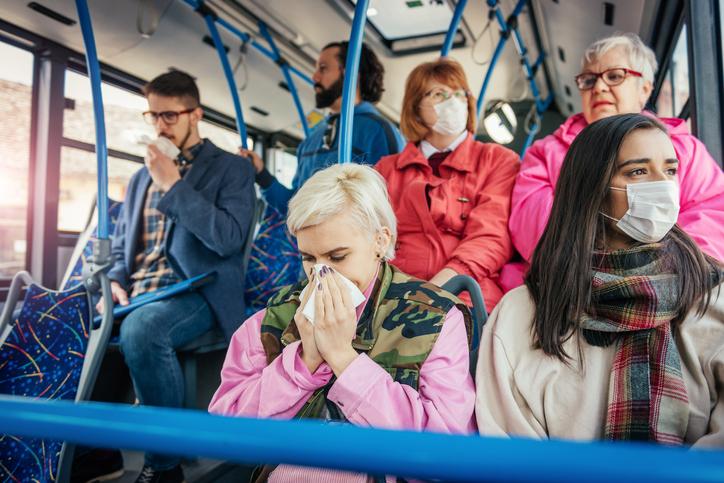 Hawaii is alive. The humid air, high temperatures, and abundant sunlight make the island perfect for different types of life -- trees, fruit, coffee, animals, tourists and bacteria. And it’s this bacteria that can cause you some problems.
Hawaii is alive. The humid air, high temperatures, and abundant sunlight make the island perfect for different types of life -- trees, fruit, coffee, animals, tourists and bacteria. And it’s this bacteria that can cause you some problems.
Open cuts, such as a coral cut, can easily become infected during your Hawaiian vacation. You can even contract the infection from the warm ocean water itself. The staph infection will likely send you to the hospital for a round of antibiotics.
You can avoid a trip to the doctor with a bit of planning. Pick up some antibiotic ointment, like Neosporin, and apply liberally to any open cuts. Take as directed, but consider applying the ointment before and after a dip in the ocean.
Jellyfish
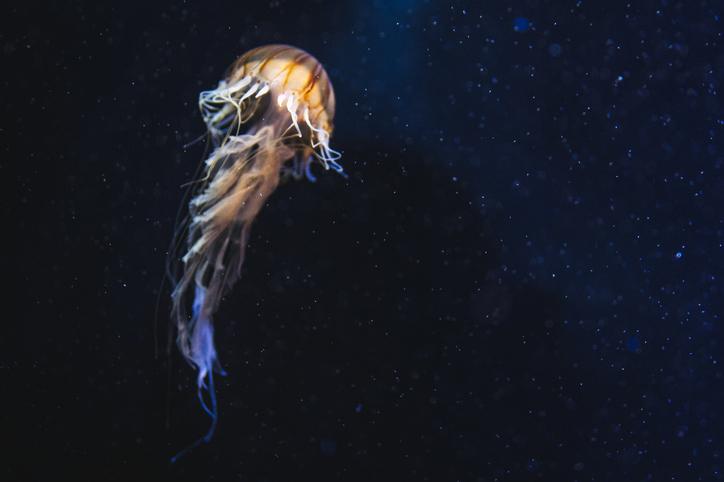 The box jellyfish is said to have the ocean’s most painful sting, and these translucent creatures are sometimes seen in Hawaii’s waters. They tend to arrive on south-facing beaches eight to 10 days after a full moon because they mate under certain lunar and tidal conditions.
The box jellyfish is said to have the ocean’s most painful sting, and these translucent creatures are sometimes seen in Hawaii’s waters. They tend to arrive on south-facing beaches eight to 10 days after a full moon because they mate under certain lunar and tidal conditions.
This makes the deadly creatures predictable. You can even download a box jellyfish calendar to see if your vacation will be affected. But, if you happened to be stung by a box jellyfish, you should get out of the water as soon as possible. It might just save your life.
The sting can be so painful that you can pass out. You can also lose consciousness if you have an allergic reaction to the sting. And you don’t want to be unconscious in the water.
The only thing that will bring any relief is vinegar. Spraying vinegar on the sting will lessen the pain, but you’ll need to visit a hospital regardless. And it’s nearly impossible to see these floaters while you’re in the water. It’s better to avoid affected beaches altogether.
Heavy trade winds can bring Portuguese Man-o-war to the shores of Hawaii, as well. Fortunately, these painful stingers can be spotted in the water. They are blue with brownish red, blue and purple tentacles. And they tend to wash up on beaches when they arrive in Hawaii, so don’t go into the water if you spot a stranded Man-o-war.
Trade winds are predictable. That means Hawaiian authorities can predict the appearance of Man-o-war. Heed all signposted warnings at the beach to avoid these nasty critters.
Red Dirt
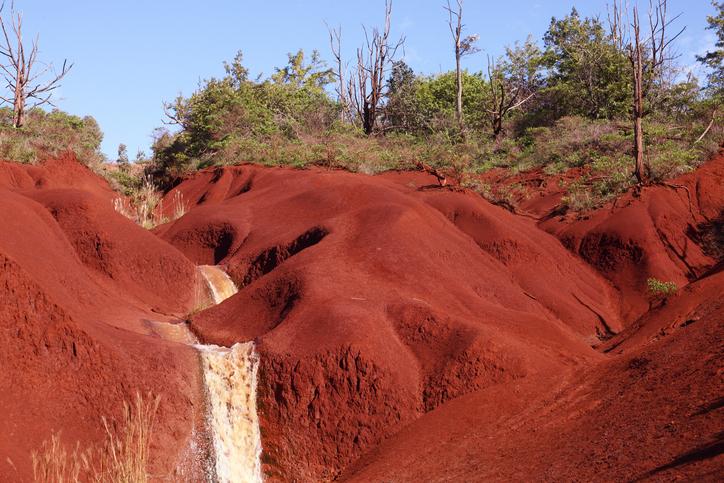 The Hawaiian islands are covered in deep red dirt. This colorful dirt is usually beautiful because it stands in stark contrast to the luscious green tropical vegetation. But the dirt can sometimes pose a health risk.
The Hawaiian islands are covered in deep red dirt. This colorful dirt is usually beautiful because it stands in stark contrast to the luscious green tropical vegetation. But the dirt can sometimes pose a health risk.
Hawaii’s red dirt can become extremely slippery. The dirt gets slick when wet or compacted, and it gets downright friction-less when it is both wet and compacted. This puts hikers at risk.
Here’s the problem -- wet red dirt is difficult to spot with the naked eye. It simply turns a slightly darker shade of red. So, without a nearby puddle, you might not recognize just how slippery the ground has become.
Hiking trails are almost guaranteed to be slippery as wet tourists compact the dirt all day long. Use extreme caution near ledges, and always use tree roots and exposed rocks for a good foothold. And don’t try to avoid puddles. Dancing around a puddle will increase your chances of a fall. Embrace the outdoors, wear sturdy shoes that you don’t mind getting dirty and carefully walk right through that muck. It’s your best chance at avoiding a fall.
Volcanic Rocks
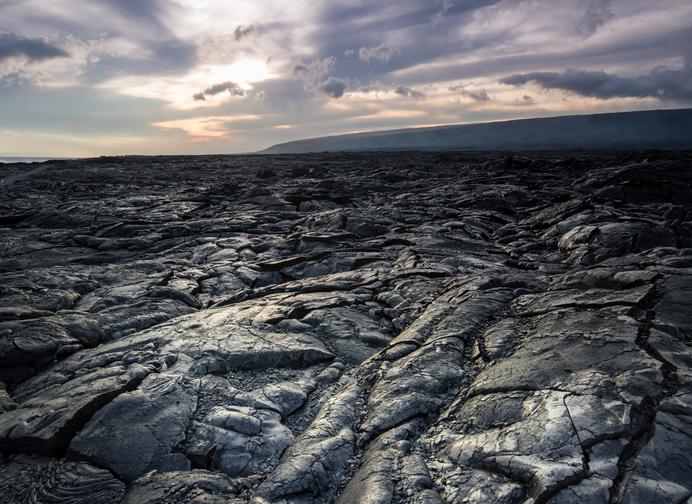 Hawaii is made of volcanic rock. You can see the young volcanic rock fields on the western side of the Big Island. In fact, the Big Island is so young that it features an abundance of black sand beaches.
Hawaii is made of volcanic rock. You can see the young volcanic rock fields on the western side of the Big Island. In fact, the Big Island is so young that it features an abundance of black sand beaches.
Black sand beaches aren’t exactly made up of sand. The black “sand” is actually made up of thousands of volcanic rocks that have been pounded to bits by the surf. These rocks are sharp, gritty and rather unpleasant underfoot. Make sure to wear sturdy sandals to that black sand beach.
And you’ll find plenty of volcanic rocks just underneath the surface of the water at many of Hawaii’s nicest beaches. To avoid an uncomfortable confrontation with these sharp rocks, you should invest in a good pair of water shoes.
The Pacific Ocean
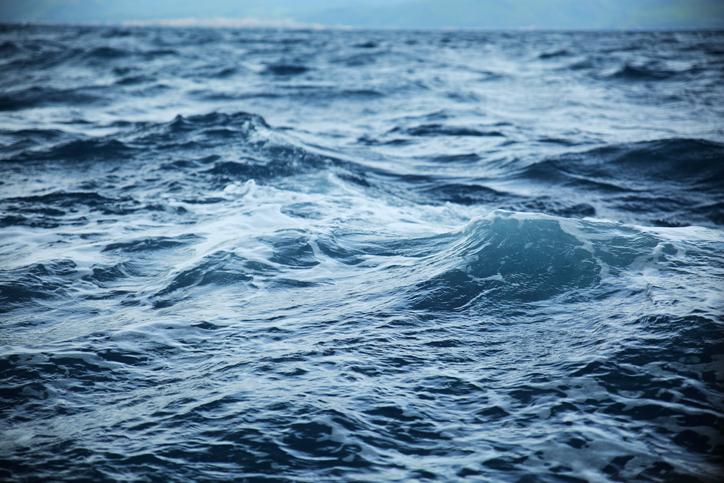 Hawaii’s friendly ocean isn’t always so friendly, and it demands to be treated with respect. On average, one Hawaiian tourist drowns per week. This fact shouldn’t dissuade you from visiting. It’s just being used to illustrate the seriousness of this health risk.
Hawaii’s friendly ocean isn’t always so friendly, and it demands to be treated with respect. On average, one Hawaiian tourist drowns per week. This fact shouldn’t dissuade you from visiting. It’s just being used to illustrate the seriousness of this health risk.
Hawaii’s beaches feature side currents, rips, rogue waves, and undertows. These powerful currents can take a hold of you in ankle-high water, and they are strong enough to carry you out into the ocean. You can always check the ocean’s behavior online before heading down to the beach, but the safest move is to ask an on-duty lifeguard about your beach’s conditions. The lifeguard will be able to tell you where and when to swim.
Hawaii has but two seasons -- dry and wet -- and the ocean gets rather violent during the winter, or wet season. The temperature drops just a few degrees, and many of the winter’s days feature a short burst of rain in the afternoon. But it’s the Pacific Ocean’s metamorphosis that is most noticeable during this time. Take extra care in the water during winter.
The Pacific can cause injuries when you’re body surfing or boogie boarding, as well. This happens when a wave stops short. The force of the wave will then send you down to the sand which can put your body and your spine into an uncomfortable position.
Always swim near a lifeguard under their advice, never turn your back on the ocean and never swim in murky water.
Murky Water
Sharks shouldn’t alarm you. Bites are incredibly rare, and sharks don’t like the taste the iron in your blood. They aren’t out to eat you. But you can increase your chances of an encounter by swimming in murky water.
The ocean water grows murky after a heavy rain. This washes sediment, dirt and freshwater fish out into the ocean. Sharks gather in the murky water to feast on the bewildered freshwater fish.
A shark may bite at you simply to see what you are during this feeding frenzy. So, do as the locals do, and avoid murky ocean water as if your life depended on it.
Loose Basalt
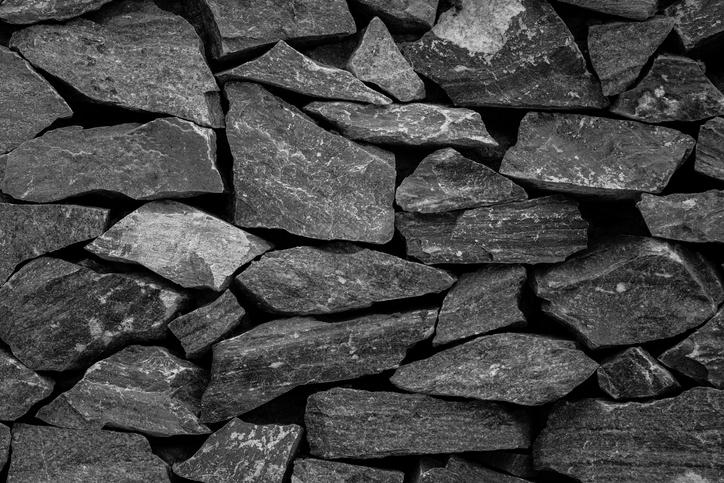 Experienced mainland hikers may be in for a surprise when hiking in Hawaii. That’s because Hawaii is made up of loose basalt rock. Most of the mainland is made up of sturdy granite rock.
Experienced mainland hikers may be in for a surprise when hiking in Hawaii. That’s because Hawaii is made up of loose basalt rock. Most of the mainland is made up of sturdy granite rock.
Never trust a handhold in Hawaii. You might want to grip onto a rock face in order to steady yourself on a narrow trail, pull yourself up a ledge or to descend a steep hill. Do not do this. The flimsy rock may give way which will send you tumbling.
Mainland granite holds. It’s trustworthy and you can grab onto the rock when you’re hiking. Hawaiian basalt may not hold. Never trust it.
Cliff-side Fern
 There is a harmless looking little plant in Hawaii that can be deadly. It is not poisonous nor does it have thorns. It’s just a short little fern that sits no taller than a foot off the ground. Or so it seems.
There is a harmless looking little plant in Hawaii that can be deadly. It is not poisonous nor does it have thorns. It’s just a short little fern that sits no taller than a foot off the ground. Or so it seems.
This tiny-looking little fern can actually grow up to 30 feet tall. It likes to live on the sides of cliffs so that it can grow right up to the cliff’s edge. Tourists have stepped on or near these harmless looking little plants only to discover there is no ground underneath. This can cause a fatal fall.
It’s easy to avoid. Simply step on exposed ground, and do not trust the plants around you. And stay a few feet back from any cliff edges just to be extra safe.